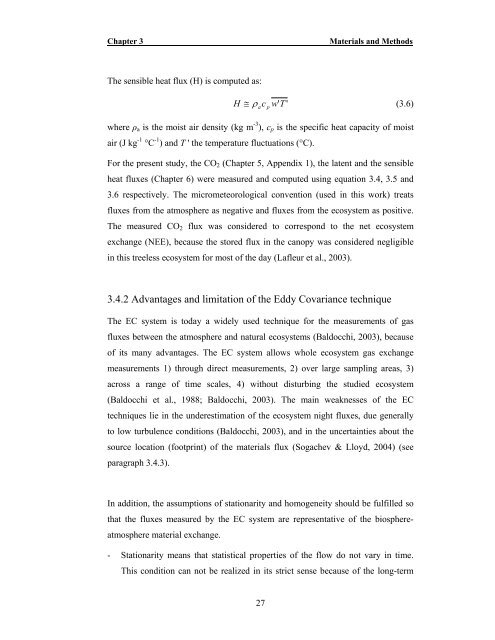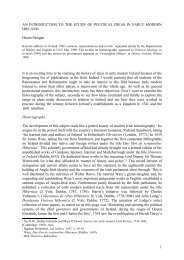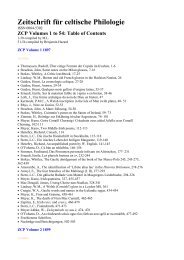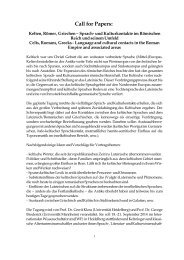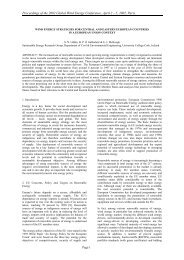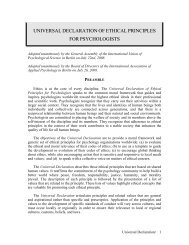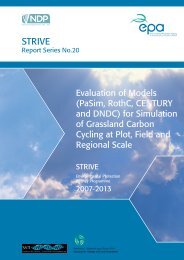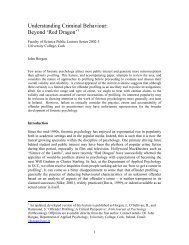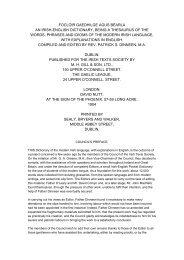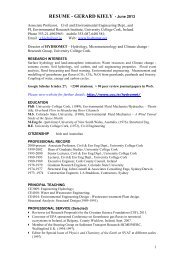PhD Thesis, 2007 - University College Cork
PhD Thesis, 2007 - University College Cork
PhD Thesis, 2007 - University College Cork
You also want an ePaper? Increase the reach of your titles
YUMPU automatically turns print PDFs into web optimized ePapers that Google loves.
Chapter 3<br />
Materials and Methods<br />
The sensible heat flux (H) is computed as:<br />
H<br />
≅ c w'T '<br />
(3.6)<br />
ρ a<br />
p<br />
where ρ a is the moist air density (kg m -3 ), c p is the specific heat capacity of moist<br />
air (J kg -1 °C -1 ) and T ' the temperature fluctuations (°C).<br />
For the present study, the CO 2 (Chapter 5, Appendix 1), the latent and the sensible<br />
heat fluxes (Chapter 6) were measured and computed using equation 3.4, 3.5 and<br />
3.6 respectively. The micrometeorological convention (used in this work) treats<br />
fluxes from the atmosphere as negative and fluxes from the ecosystem as positive.<br />
The measured CO 2 flux was considered to correspond to the net ecosystem<br />
exchange (NEE), because the stored flux in the canopy was considered negligible<br />
in this treeless ecosystem for most of the day (Lafleur et al., 2003).<br />
3.4.2 Advantages and limitation of the Eddy Covariance technique<br />
The EC system is today a widely used technique for the measurements of gas<br />
fluxes between the atmosphere and natural ecosystems (Baldocchi, 2003), because<br />
of its many advantages. The EC system allows whole ecosystem gas exchange<br />
measurements 1) through direct measurements, 2) over large sampling areas, 3)<br />
across a range of time scales, 4) without disturbing the studied ecosystem<br />
(Baldocchi et al., 1988; Baldocchi, 2003). The main weaknesses of the EC<br />
techniques lie in the underestimation of the ecosystem night fluxes, due generally<br />
to low turbulence conditions (Baldocchi, 2003), and in the uncertainties about the<br />
source location (footprint) of the materials flux (Sogachev & Lloyd, 2004) (see<br />
paragraph 3.4.3).<br />
In addition, the assumptions of stationarity and homogeneity should be fulfilled so<br />
that the fluxes measured by the EC system are representative of the biosphereatmosphere<br />
material exchange.<br />
- Stationarity means that statistical properties of the flow do not vary in time.<br />
This condition can not be realized in its strict sense because of the long-term<br />
27


